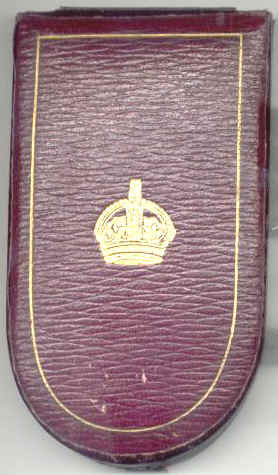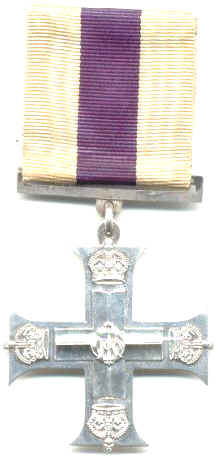 |
| Category: Assorted/Heroes |

|
|
|
|
|
|
2807
WO1 (RSM) H. MACKENZIE, MC 46th Bn. A.I.F. |
|
Hugh
MACKENZIE was born at
Menindee
,
New South Wales
on the 27 January 1881 the son of Simon and Catherine MacKenzie. His
father a Scotsman was a 48 year old storekeeper at his birth.
He
originally enlisted into the AIF as a Officer on the 19 February 1916
and was allotted to the 14th Reinforcements of the 28th
Battalion, as a Second Lieutenant. His appointment was promulgated in
the
Commonwealth
of
Australia Gazette
31/16. For reasons unknown MACKENZIE has had his Commission terminated
on the 8 August 1916, it was promulgated in CAG 110/16. This would have
no doubt been due to the desire of active service.
|
 |
On
the 19th September 1916 at
Royal
Park,
Melbourne, Victoria
he enlisted into the AIF,
this time as a Private. He stated his age as 35 years and 7 months with
his occupation that as a farmer. His previous Commissioned AIF service
of 11 months was listed on his attestation papers.
He
was allotted to the 6th reinforcements of the 46 Battalion with service
number 2807. He embarked from Melbourne on the 20 October 1916 briefly
stopping over at Sierra Leone on the 4 December before re-embarked for
England were he arrived on the 28 December 1916.
He
has began further training at the
School
of
Musketry
at Tidworth during January – February 1917 as having a fair knowledge
of the Lewis Gun. He then went onto to complete a course of instruction
at the the
S.C.
Bombing
School
,
Lyndhurst
between Feb-Mar 1917.
He
has then proceeding overseas to
France
on the 3 May 1917 before been taken on strength of the 46 Battalion on
the 8 May 1917. He was promoted temporary Corporal on the 11 May and
confirmed in that rank on the 16 June 1917. He was soon to see action as
the 46th Battalion was put into the line during the Battle of Messines. |
|
The medal case. |
|
He
was wounded in action at Belgium
on the 18 August 1917 during the Third Battle of Ypres, suffering a
severe shrapnel wound to his right leg. Returned to England
for treatment it was not until the 10 May 1918 that he rejoined his
unit, now a Lance Sergeant. He was then promoted to Warrant Officer
Class 2 (CSM) then Warrant Officer Class 1 both on the 17 July 1918.
He
was wounded on a second occasion at Peronne on the 18 September 1918
with shrapnel wounds to his leg and shoulder. For his actions on this
day his was awarded the Military Cross. After
treatment in
France he again rejoined his unit in the field on the 10 October 1918.
He
finally returned to
Australia
per Troopship "Plassy" on the 5 September 1919 arriving in Australia
on 25 October 1919. He was discharged from the AIF on the 16 March 1920.
He
died at the Heidelberg Repatriation General Hospital, Victoria on the 13
October 1962 aged 82 years, and cremated at the Springvale
Crematorium three days later. He was twice married and was survived by
his wife and two children. |
 |
Military
Cross:
R.S.M.
(W.O. Class 1) Hugh MacKenzie
46th
Battalion. A.I.F.
|
|
For
courage and devotion to duty. His work of keeping up the supply of
ammunition has been excellent. During the attack east of PERONNE on 18th
September, 1918, Battalion Headquarters came under heavy shell fire and
became very disorganized. It was owing to his initiative and courage
that this was quickly remedied. His up and until he was wounded in the
advance was of the greatest value to the Battalion. As R.S.M. of the
Battalion his work has always been of the greatest assistance in
maintaining a very high state of efficiency and discipline: his bearing
and example has always had a very marked effect on the N.C.Os. of the
battalion. The N.C.O. has done brilliant work in the Battalion, and I
strongly recommend him for reward.
Promulgated
in the Fifth Supplement, No. 31370 to the London Gazette, dated 3rd
June, 1919.
&
Commonwealth
of
Australia Gazette,
No. 109 dated 15th September, 1919. |
| There
was a total of 2398 Military Crosses awarded to the AIF during the First
World War with 170 first bars and 4 second bars. Of these only 36 went
to Warrant Officers; a breakdown is as follows; Artillery 4, Light Horse
2, Infantry 26, Signals 1 & Army Service Corps 3. |
| Please
note:
That the campaign awards of the British War Medal and Victory Medal do
not appear to have been issued. This is detailed in his service file
which states that both these medals were returned unclaimed on the 30
September 1924. He had been was issued his MC from 5 Military District
in 1921. So sometime between these years he has moved on leaving no
contact address. From my research the reasons for this appear to be as
follows. In Dec 1919 his form of Commission was forwarded to his first
wife in
South Perth
. He has then re-married at some stage and from his death certificate he
has moved around between States a lot. States locations as follows, 39
years in
Victoria, 14 years in WA, 14 years in NSW, 8 years in SA and 2 years in Tasmania. |
|